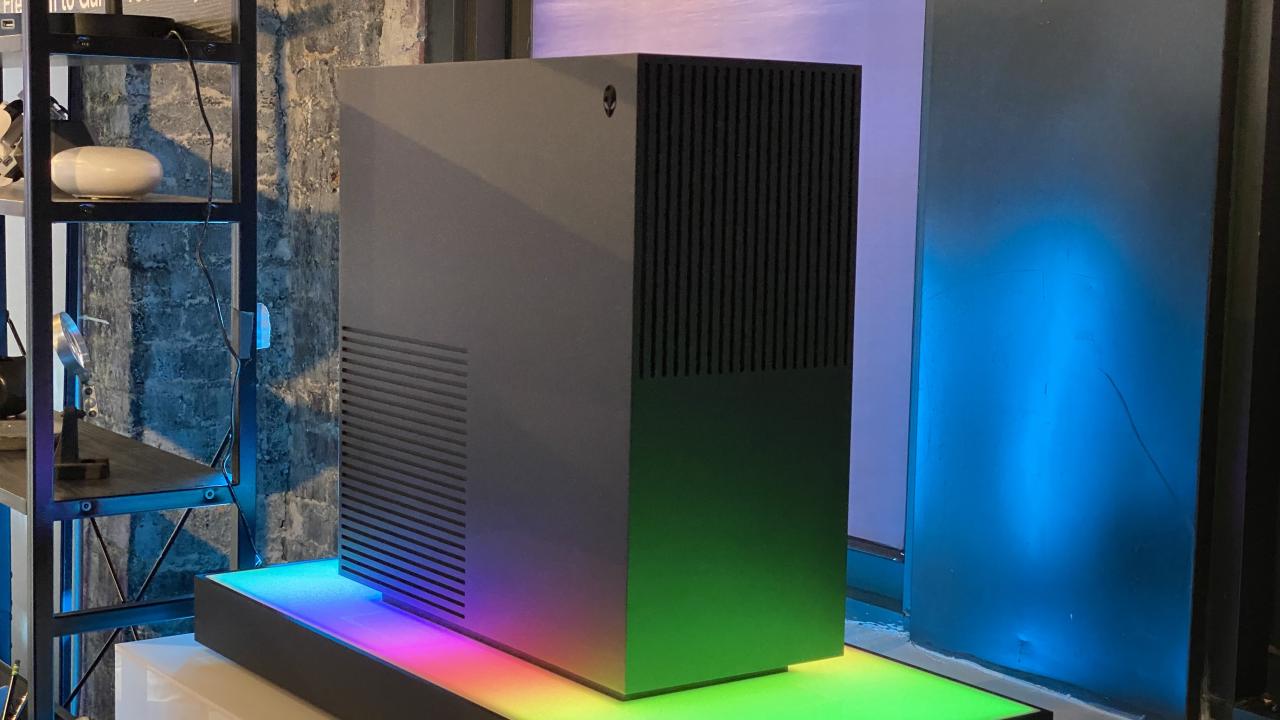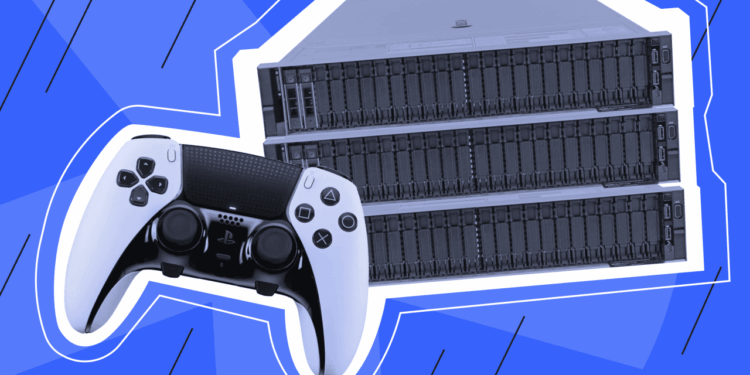For any dedicated online gamer, there’s a unique frustration that can ruin an entire session: lag. That moment when your perfectly aimed shot misses, your building collapses, or your character glitches out of existence, not because of a lack of skill, but because of a poor connection. This frustration is often a direct result of an underpowered or improperly configured game server. A truly great gaming experience requires more than just a fast home internet connection; it demands a server that can handle the complex computational demands of a modern game world with unwavering reliability.
This comprehensive guide is your blueprint for achieving that perfect, lag-free experience. We will explore the intricate world of high-performance gaming servers, delving into the critical hardware and software components, the fundamental choices between hosting models, and the advanced optimization techniques that separate a good server from a truly exceptional one. Whether you are building a private server for a small group of friends or launching a public community hub for thousands of players, understanding these principles is the key to providing an unrivaled gaming experience.
The Anatomy of a High-Performance Game Server

A gaming server is a dedicated computer designed to run a game’s instance 24/7, handling all player connections, physics calculations, and world data. For peak performance, every component must be chosen with a specific purpose in mind. Unlike a desktop PC optimized for graphics, a game server is a pure computational workhorse.
A. The Central Processing Unit (CPU): The Engine of the Game World
The CPU is the most critical component of any game server. While a high core count is beneficial for running multiple services or virtual machines, many popular games, especially older titles and modded versions, are still heavily reliant on single-thread performance. This means a CPU with a high clock speed and strong IPC (Instructions Per Clock) is often more valuable than one with a high core count.
- Intel vs. AMD: For many years, Intel’s high clock speeds made them the go-to choice. However, modern AMD Ryzen processors, particularly the X3D series with 3D V-Cache, have become a dominant force in both gaming and server applications. The massive L3 cache on these CPUs can dramatically reduce latency and improve performance for games that are sensitive to memory access times.
- The Sweet Spot: Look for a CPU with a high base and boost clock speed, and a generous cache size. Processors like the Intel Core i7 or i9, or AMD Ryzen 7 or 9 series, are often the perfect fit, offering a blend of high single-thread performance and enough cores to handle multiple tasks or players.
B. The Memory (RAM): The Game World’s Workspace
The server’s RAM is where the entire game world, player data, and all plugins or mods are stored while the server is running. Insufficient or slow RAM is a primary cause of server lag and crashes.
- Capacity is Key: A minimum of 16GB is a good starting point for a small server, but for large communities or mod-heavy games, 32GB or even 64GB is often necessary. Games like Ark: Survival Evolved or heavily modded Minecraft servers can easily consume massive amounts of RAM.
- Speed and Type: While speed is important (DDR4 or DDR5), for dedicated servers, stability is paramount. For on-premise builds, consider Error-Correcting Code (ECC) RAM. ECC RAM can detect and correct memory errors, which can prevent crashes and data corruption in a server that runs non-stop.
C. Storage Solutions: The Speed of Access
The speed at which your server can read and write data directly impacts player load times and the overall responsiveness of the game world.
- HDDs (Hard Disk Drives): Traditional hard drives offer large capacity for a low price, but their slow read/write speeds make them completely unsuitable for a high-performance game server.
- SATA SSDs: Standard Solid-State Drives are a significant upgrade, offering a massive boost in performance over HDDs. They are a good minimum requirement for any gaming server.
- NVMe SSDs: The modern standard for peak performance. NVMe (Non-Volatile Memory Express) SSDs connect directly to the motherboard via a PCIe slot, offering several times the speed of a SATA SSD. This translates to lightning-fast boot times, near-instant world loading, and a seamless experience for players joining the server. An NVMe drive is a non-negotiable investment for a high-performance game server.
D. The Network Interface Card (NIC): The Gateway to the World
A fast CPU and storage are useless if your network connection is a bottleneck. The NIC is the hardware that connects your server to the internet.
- Gigabit Ethernet (1GbE): This is the baseline for most servers and is sufficient for many small to medium-sized gaming communities.
- High-Speed NICs: For larger communities or games that are particularly bandwidth-intensive, consider a server with a 2.5GbE or even a 10GbE network card. This ensures you have the bandwidth to handle a high number of concurrent players without any network lag.
The Core Decision
Once you have an understanding of the hardware, the next crucial decision is where to host your server. You have three main options, each with a distinct set of pros and cons.
A. On-Premise (DIY) Dedicated Server:
This involves building and hosting a server in your own home or office. You are in complete control of the hardware and software.
- Advantages:A. Total Control: You have full root access and can customize every aspect of the server.B. No Recurring Fees: After the initial hardware investment, your only costs are electricity and internet.
C. The Ultimate Performance: As the sole user, you get 100% of the server’s resources.
- Disadvantages:A. High Upfront Cost: Building a powerful server requires a significant initial investment.B. Requires Technical Expertise: You are responsible for all server administration, security, and maintenance.
C. Bandwidth and IP Address Issues: Most residential internet connections have limited upload speeds and dynamic IP addresses, which can be a problem.
D. No Built-in DDoS Protection: You are vulnerable to malicious attacks that can take your server offline.
B. Game Server Hosting Provider:
These companies specialize in providing pre-configured and optimized servers for specific games. They are the most popular choice for gamers who want a simple, plug-and-play solution.
- Advantages:A. Ease of Use: Servers come pre-installed and managed via a user-friendly control panel.B. Excellent Network Infrastructure: Hosts use data centers with massive bandwidth and low-latency connections to ensure a smooth experience for players.
C. DDoS Protection: High-quality hosts provide built-in protection against DDoS attacks.
D. Scalability: You can easily upgrade or downgrade your plan as your community grows or shrinks.
- Disadvantages:A. Less Control: You have limited access to the server’s underlying OS and hardware.B. Recurring Costs: You pay a monthly or annual fee, which can be expensive over time.
C. “Noisy Neighbor” Effect: On a shared host, another user’s resource-intensive server could impact your performance.
C. Cloud VPS (Virtual Private Server):
A Cloud VPS is a virtual machine running on a powerful server in a data center. It’s a middle ground that provides a dedicated environment without the hassle of a physical server.
- Advantages:A. More Control: You have full root access to the OS, allowing you to install any game or software you want.B. Scalable Resources: You can easily add more RAM, CPU cores, or storage as needed.
C. Professional Network: You get the benefits of a data center’s low latency and high bandwidth.
- Disadvantages:A. Requires Technical Expertise: You need to be comfortable with server administration and command-line interfaces.B. Costs Can Add Up: While often cheaper than a fully dedicated server from a host, hourly or monthly costs can increase quickly with usage.
Gaming Server Software and Optimization
Hardware is only half the battle. The software that runs on your server and how it is configured is just as important for achieving peak performance.
A. Choosing the Right Operating System (OS):
- Linux: For most game servers, a lightweight Linux distribution like Ubuntu Server or CentOS Stream is the superior choice. They have a smaller memory footprint, lower CPU overhead, and are highly secure. They are also free, which is a major bonus for a budget-conscious build.
- Windows Server: While familiar to many, Windows Server has more overhead and requires an expensive license. It is a good choice for games that only run on the Windows platform or for users who are not comfortable with Linux.
B. Server Management Panels:
For those who are not command-line wizards, a web-based management panel can be a lifesaver. These panels simplify everything from starting and stopping the server to installing mods and managing users.
- Pterodactyl: A free, open-source panel known for its security and a wide range of features.
- McMyAdmin: A popular, user-friendly panel specifically for Minecraft servers.
C. Critical Server Optimization Techniques:
- Configuration Files: Most games have a configuration file (e.g.,
server.cfg) where you can tweak settings like player slots, tick rate, and world size. Optimizing these settings for your specific hardware and player count is crucial. - Plugin and Mod Management: Every single plugin or mod you add to a game server consumes resources. Only install what you absolutely need, and regularly audit your plugins for performance impact.
- Automated Restarts: Running a server for weeks on end can lead to performance degradation. Schedule regular, automated restarts (e.g., once every 24 hours) to clear memory leaks and ensure the server runs smoothly.
- Server Monitoring: Use tools to monitor your server’s CPU, RAM, and network usage. This allows you to identify performance bottlenecks before they become a problem.
Advanced Scenarios and Game-Specific Demands

Different games place wildly different demands on server hardware. Understanding these nuances is critical for selecting the right setup.
A. Minecraft Servers:
Minecraft servers are notoriously demanding on a CPU’s single-thread performance.
- Optimized Jar Files: Use optimized server software like PaperMC or Spigot instead of the vanilla Minecraft server. These versions are designed to improve performance and reduce resource consumption.
- Modpacks: Heavier modpacks can drastically increase RAM and CPU usage. For a popular modpack, a server with 32GB of RAM and a powerful CPU is often a minimum requirement for a smooth experience.
B. Rust and Ark: The Performance Monsters:
Rust and Ark are famous for being incredibly resource-intensive. They require a powerful CPU, a huge amount of RAM, and a fast NVMe SSD to handle the large, dynamic game worlds and the high number of players. For these games, a dedicated server with a top-tier CPU and a large amount of RAM is often the only way to ensure a playable experience.
C. First-Person Shooters (FPS): The Low-Latency Kings:
For fast-paced shooters like Counter-Strike, Battlefield, or Call of Duty, low latency and high tick rate are paramount. A powerful CPU is needed to handle the tick rate (the number of times the server updates per second), and a clean, low-latency network connection is essential for a lag-free experience.
D. Massive Multiplayer Online (MMO) Servers:
MMOs have unique requirements, as they must manage hundreds or even thousands of concurrent players in a persistent world. They require a powerful server with a balance of high single-thread performance and a high core count to handle a multitude of background processes and player interactions. A fast network connection and a massive amount of RAM are also non-negotiable.
Security and Maintenance for Uninterrupted Gaming
A high-performance server is useless if it is constantly offline due to an attack or poor maintenance.
A. DDoS Protection:
A DDoS (Distributed Denial-of-Service) attack is an attempt to overwhelm a server’s network with a flood of traffic, taking it offline. High-quality game server hosts and dedicated server providers offer built-in, enterprise-grade DDoS protection, which is essential for any public server. For a DIY setup, you would have to rely on third-party services, which can be expensive and complex.
B. Firewall Configuration:
A firewall is your server’s first line of defense against cyberattacks. It is a critical tool for blocking unwanted traffic and ensuring that only legitimate player connections are allowed.
C. Automated Backups:
Hard drives fail, bugs corrupt worlds, and a wrong command can wipe everything out. Set up an automated backup system that regularly saves your server data to a separate location (e.g., cloud storage or another hard drive). This is your ultimate insurance policy against data loss.
D. Routine Maintenance:
Just like a car, a server needs regular tune-ups. This includes:
- Keeping the operating system and game server software updated with the latest security patches.
- Cleaning up old log files and temporary data.
- Monitoring resource usage to proactively identify bottlenecks.
Conclusion
Building or renting a gaming server for peak performance is a strategic investment that pays off with a superior, lag-free experience for you and your community. The key is to move past the simple idea of “more power” and embrace a holistic approach that considers every aspect of the server’s anatomy—from the raw processing power of the CPU and the speed of the NVMe storage to the low-latency network connection and the security of a well-configured firewall. The best gaming server is not always the most expensive one, but the one that is meticulously optimized for the specific demands of the game it hosts and the size of the community it serves.
The decision between a DIY on-premise server and a hosted solution is a choice between ultimate control and effortless convenience. While building your own server can be a rewarding project that provides unparalleled performance, it requires a significant financial investment and a deep commitment to technical administration. For the vast majority of gamers and small communities, a high-quality game server hosting provider offers an unbeatable value proposition, providing a secure, stable, and scalable platform with built-in protection against the most common threats.
In a world where online gaming continues to evolve with more complex mechanics and massive open worlds, the importance of a well-tuned server will only continue to grow. Whether you are running a survival game that tests the limits of server hardware or a fast-paced shooter where every millisecond matters, the principles of a high-performance server remain the same: prioritize hardware with a focus on single-thread performance, invest in lightning-fast storage, secure your network, and maintain your software. By following the blueprint outlined in this guide, you can create a server that is not only robust and reliable but also provides an unforgettable gaming experience that will keep players coming back for years to come.







